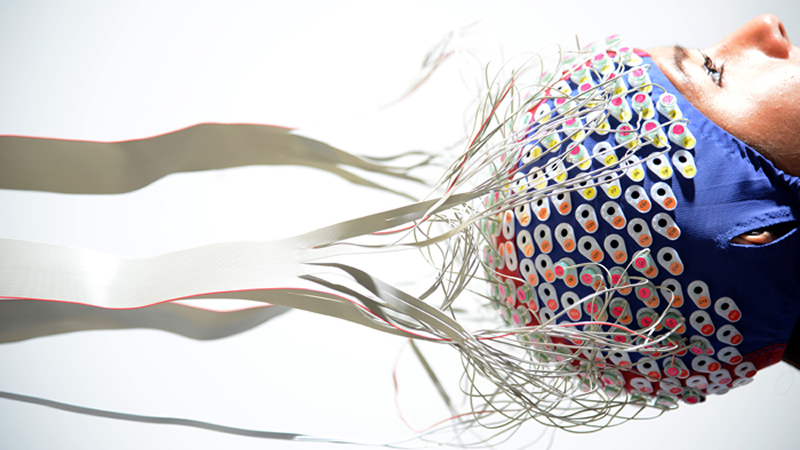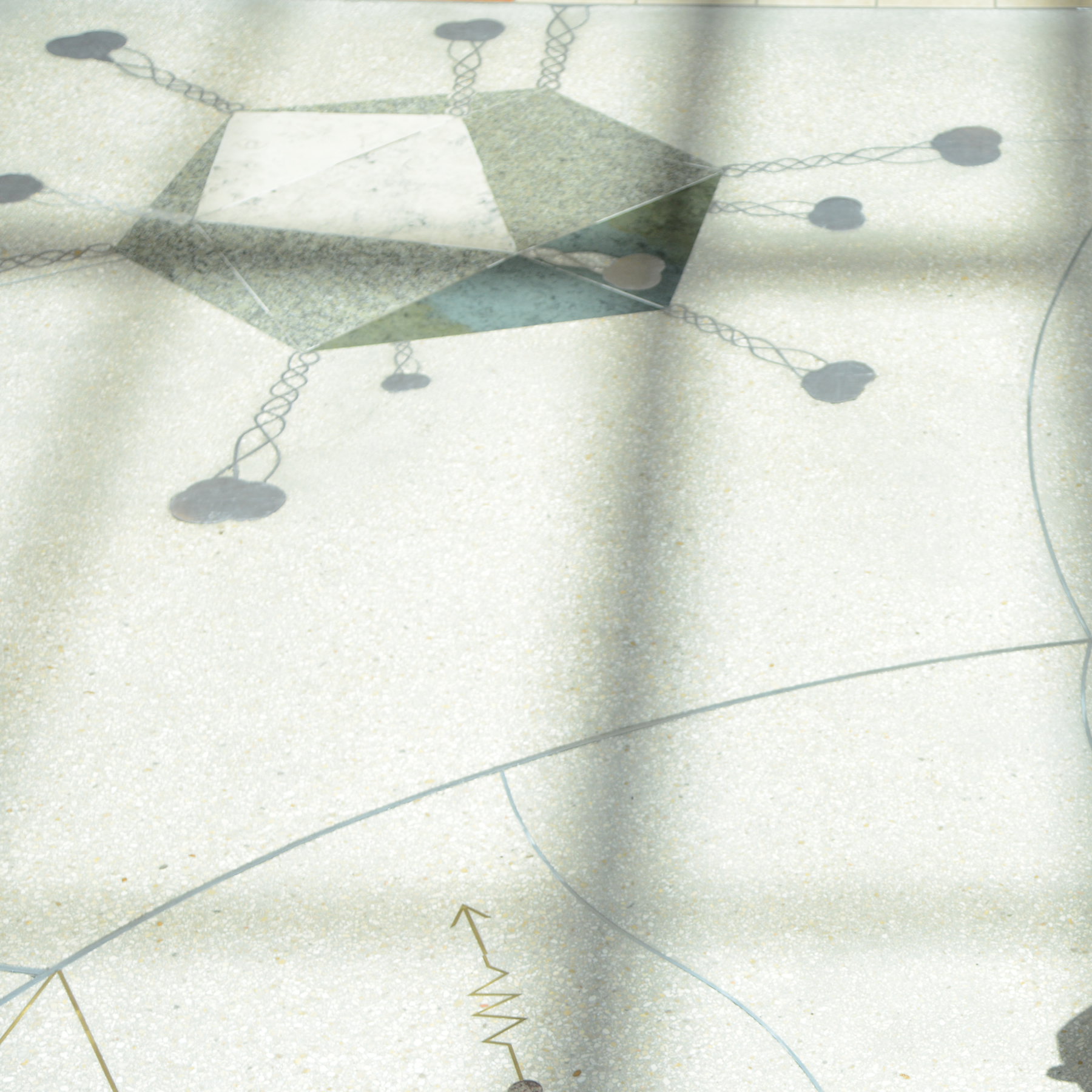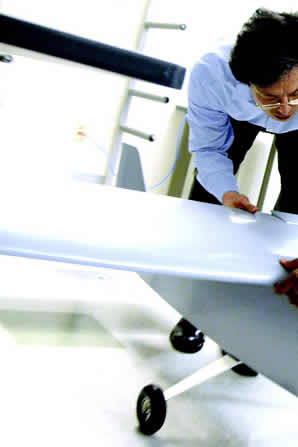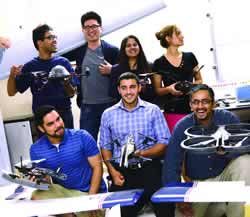
Maximizing brain power
UTSA acquires high-performance EEG systems to advance brain research in numerous fields across campus
A recent $400,000 grant from the U.S. Department of Defense has allowed UTSA to acquire two high-performance electroencephalogram (EEG) systems to advance research and education in the area of brain-machine interaction (BMI).
Understanding how the human brain functions and how this knowledge can benefi t society is both a UTSA and a national research priority. BMI, also known as brain-computer interface (BCI), is a field focused on assisting, augmenting or repairing human cognitive or sensory-motor functions.
The new equipment, housed in the BMI Lab in the Applied Engineering and Technology Building, will enable several highly interdisciplinary research and educational projects in BMI and brain research led by six professors from five departments across UTSA.
Yufei Huang, UTSA professor of electrical and computer engineering and principal investigator of this grant, recognized the university-wide need for high-performance EEG systems, which are state-of-the-art, non-invasive devices for measuring brainwaves in real time in both laboratory and real-life environments. Very few universities across the country have equipment of this quality.
“UTSA already has a strong presence in neuroscience research and education,” said Huang. “This new EEG technology will signifi cantly enhance our scholarly contributions to advancing new knowledge in brain research. Our long-term vision is to develop a top-tier research and education center on brain-machine interaction at UTSA.”
UTSA.” Mary L. Clark Endowed Distinguished Professor and chair of the Department of Electrical and Computer Engineering Daniel Pack and Huang will use the equipment to design and implement a BMI system that uses brain signals generated by a soldier to navigate small unmanned aerial vehicles for military operations such as collecting intelligence, performing surveillance and conducting reconnaissance missions. This project is funded by the Army Research Laboratory.
Applying the EEG to UTSA’s Unmanned Systems Laboratory
UTSA’s Unmanned Systems Laboratory (USL) has flown under the radar since its founding in 2012 by Pack, one of the nation’s leading teachers and researchers in unmanned aircraft systems, commonly referred to as drones.
Pack and his team of undergraduate and graduate students have been making advancements in three primary areas of research: man-machine interfaces; cooperative unmanned aerial vehicles (UAV); and system of systems (how smaller components work together in larger systems).
The UTSA team recently was awarded a $300,000 contract from the Office of the Secretary of Defense to study how humans can effectively interact with autonomous aerial vehicles. The goal of the project is to use brain signals of a soldier to navigate small UAVs for military operations such as collecting intelligence, performing surveillance and conducting reconnaissance missions.
Current UAVs must have a ground station that relays instructions from a human operator to an aerial vehicle, but ground stations are static and can restrict soldiers and their units from moving freely.
Using the university’s EEG equipment, Pack, Huang and their teams hope to eliminate the need for ground stations by extracting vehicle control signals directly from brain signals of a soldier operating one or more aerial vehicles.
“As autonomous UAV technologies advance, it is critical that we understand the governing principles of man-machine interactions to utilize the complementary capabilities of man and autonomous machines,” said Pack. “This research will be part of UTSA’s efforts toward discovering those principles.”
While UAVs are heavily used in military applications, they are being used more commonly for civilian operations such as search and rescue, weather analysis and surveillance over land and water.
UTSA and San Antonio’s Southwest Research Institute are members of the Texas A&M University- Corpus Christi Lone Star Unmanned Aircraft Systems Center of Excellence and Innovation (LSUASC), a consortium of 16 research institutions and private-sector service companies. In June, LSUASC was granted approval by the FAA to serve as a test site for unmanned aircraft.
Before joining UTSA in 2012, Pack served in both faculty and administrative positions at the U.S. Air Force Academy in Colorado Springs, Colo., including founding director of its Academy Center for Unmanned Aircraft Systems Research and director of its Sensor-based Intelligent Robotics Laboratory.
Pack received his Ph.D. in electrical engineering from Purdue University, his M.S. in engineering science from Harvard University and his B.S. in electrical engineering from Arizona State University. Additionally, he is a licensed professional engineer (P.E.) in electrical engineering.
Applying the EEG across campus
New EEG systems will also support the following projects at UTSA:
- Huang and computer science professor Kay A. Robbins will use the EEG equipment to develop and implement a computational system to monitor brain activities in realistic, event-rich environments. This research is part of the Cognitional and Neuroergonomics Collaborative Technology Alliance (CANCTA), a multi-institution collaboration funded by the U.S. Army Research Laboratory (ARL).
- Robbins also will use the equipment to capture data from the brain during attention and learning tasks in order to build a database that will help researchers see patterns in brain activity. This project also is part of CANCTA, funded by ARL.
- Kinesiology associate professor Wan Xiang Yao will use the equipment to examine the neuromechanisms underlying the transfer of learning from one side of the body to another and metal imagery practice, which will be helpful for patients relearning motor skills lost due to traumatic brain injury or disease, such as a stroke.
- Biology assistant professor Nicole Wicha will use the equipment to determine the neurodevelopmental trajectory for arithmetic fact learning in bilingual children.
- Mechanical and biomedical engineering professor Yusheng Feng will use the equipment to develop a real-time feedback tutoring algorithm to monitor students’ brain activity when they are studying science, technology, engineering and mathematics. He also will use the algorithm to provide students with learning disabilities feedback to improve their study habits by providing vivid encouraging visualization cues.
More than two dozen UTSA faculty members and their graduate and undergraduate students are actively involved in brain research and education, many of whom are affiliated with the UTSA Neurosciences Institute, a multidisciplinary research organization for integrated brain studies.
—K.C. Gonzalez/Public Affairs Specialist



